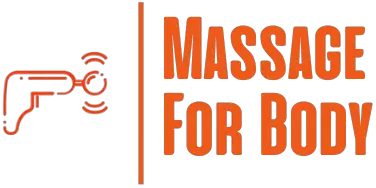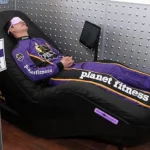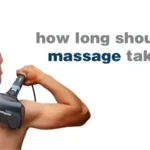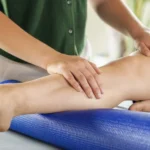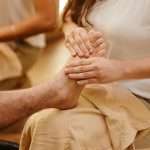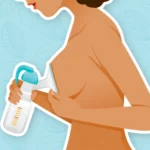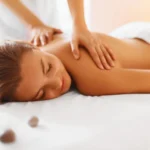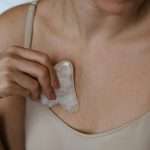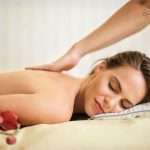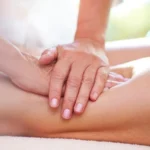Let’s be honest—when we talk about self-care, we rarely think about our breasts. But learning how to breast massage can be one of the most surprisingly nurturing and empowering habits to add to your routine. It’s not just about relaxation (though that’s a bonus); it’s about tuning in, easing discomfort, improving circulation, and supporting your health in a deeply personal way. Whether you’re navigating PMS soreness, nursing a little one, or simply getting to know your body better, this gentle ritual has more benefits than you might expect.
In this guide, we’ll walk you through everything you need to know—techniques, benefits, when to avoid it, and more.
Table of Contents
💗 Why Breast Massage Matters
Breasts are often overlooked when it comes to bodywork, but they contain lymph nodes, fatty tissue, blood vessels, and nerve endings that respond positively to gentle stimulation.
Benefits of incorporating breast massage into your self-care routine include:
- Stimulating lymphatic drainage, which helps remove toxins from the body
- Improving blood circulation to the chest and surrounding areas
- Helping detect lumps or abnormalities early through regular touch
- Reducing breast tenderness, especially around menstruation
- Promoting relaxation and emotional well-being
Some people also believe breast massage may improve skin tone, support hormonal balance, or even aid breast development—but scientific backing is limited in those areas.
✋ Types of Breast Massage
There are several techniques you can use depending on your goal:
1. Self Breast Massage
A simple, gentle massage you do on yourself to promote circulation, reduce discomfort, or just check in with your body. Often part of a daily or weekly wellness routine.
2. Lymphatic Drainage Breast Massage
Uses light, rhythmic strokes toward lymph nodes under the armpits and around the collarbone. This supports the lymphatic system, which flushes out waste from tissues.
3. Therapeutic or Medical Breast Massage
May be provided by a certified massage therapist, often after surgery (like mastectomy or implants), during lactation, or to relieve chronic breast pain. Always check credentials.
4. Breast Massage While Breastfeeding
Used to relieve engorgement, plugged ducts, or mastitis. Helps with milk flow and comfort. We’ll touch on this in more detail below.
Benefits of Breast Massage
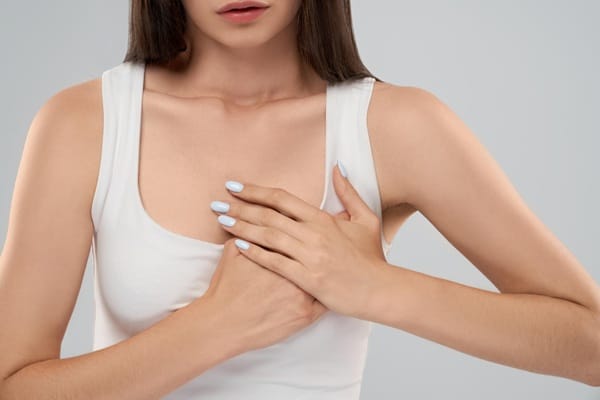
So, why should you even bother adding breast massage to your wellness routine?
Aside from feeling good, this simple practice offers real physical and emotional rewards. From relieving tension to supporting your body’s natural detox processes, here’s what regular breast massage can do for you:
✅ Reduced swelling and tenderness
Breast massage can alleviate discomfort caused by hormonal fluctuations, menstruation, or postpartum engorgement. By improving circulation and lymph flow, it can help reduce fluid retention and inflammation.
✅ Enhanced body awareness and self-confidence
Regular self-touch builds familiarity with your own body, which can boost confidence and help detect any changes or abnormalities early.
✅ Support for hormone-related breast discomfort
Gentle massage may help regulate hormonal imbalances by stimulating circulation and reducing tension in the chest area, which can relieve symptoms like tenderness or heaviness.
✅ Relief from PMS-related breast pain
Many people experience aching or sore breasts before their period. Massage helps to relax tight tissues and increase blood flow, which can reduce pain intensity.
✅ Better lymph flow and detoxification
The lymphatic system doesn’t have a pump like the heart, so gentle massage encourages lymphatic drainage and helps flush out cellular waste and toxins.
✅ Faster healing after surgery
When approved by a healthcare provider, breast massage after surgeries such as augmentation, mascectomy, breast implants, or lumpectomy can promote healing by reducing scar tissue, softening the tissue around implants, and improving circulation to the area.
✅ Improved skin tone and elasticity
Stimulating the skin through massage can promote collagen production and maintain firmness, potentially giving the breasts a more lifted appearance over time.
✅ Greater relaxation and emotional release
Breasts are connected to the heart and chest area, both physically and emotionally. Massaging this region can calm the nervous system, lower stress hormones, and even trigger emotional release.
🧴 How to Breast Massage (Step-by-Step)
Breast massage doesn’t have to feel clinical or awkward—it can be a calming, nurturing ritual you actually look forward to. Whether you’re curious about how to breast massage for better circulation, lymphatic support, or to ease soreness, here’s a step-by-step guide that’s easy to follow and designed to help you feel good in your body.
Step 1: Set the Mood
Start by creating a space where you feel safe, warm, and comfortable. The more relaxed you are, the more effective the massage will be.
- Find a quiet, private space—your bedroom, bathroom, or even in the shower works
- Dim the lights or light a candle
- Play calming music or take a few deep breaths
- Make sure your hands are clean and warm
- Take a moment to check in with your body and set an intention for this time—whether it’s healing, comfort, or simply self-connection
Step 2: Choose Your Massage Oil
Using the right oil helps your hands glide more smoothly across the skin and nourishes the delicate tissue. Here are some popular options:
- Coconut oil – soothing and lightly scented
- Almond oil – rich in vitamin E and gentle on skin
- Olive oil – deeply hydrating and antioxidant-rich
- Jojoba oil – great for sensitive or acne-prone skin
Optional: Add a drop or two of essential oil like lavender, chamomile, or rose for extra relaxation—but always do a patch test first.
Step 3: Start with Light Circular Motions
Warm the oil between your palms, then gently place your hands on your chest.
- Use your fingertips to make soft, circular movements on the outer edge of each breast
- Move in a clockwise direction, slowly working your way inward
- Avoid direct pressure on the nipples unless it feels comfortable for you
- Breathe deeply and go slow—this is about connection, not performance
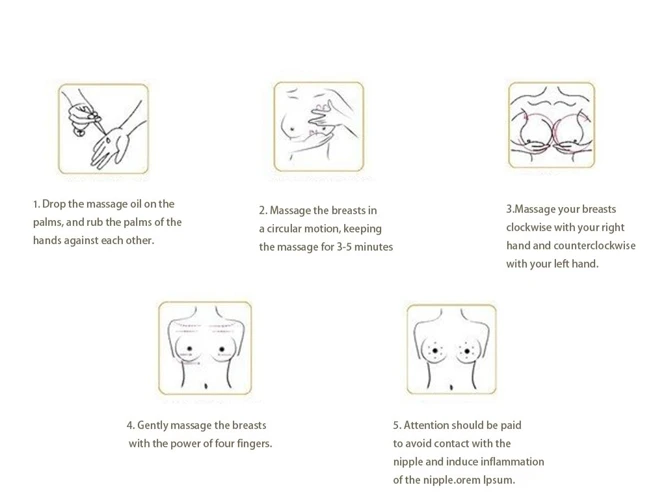
Step 4: Sweep Inward to Promote Flow
This technique encourages blood circulation and lymphatic drainage.
- Using your full palm or the pads of your fingers, sweep from the outer breast toward the center of your chest
- Imagine guiding fluid gently toward your heart
- Repeat 5–10 times on each side, staying present with the sensation
Step 5: Massage Around the Lymph Nodes
Lymphatic drainage is one of the most important benefits of breast massage.
- Gently stroke the area beneath your armpits and along your collarbone
- Use upward, featherlight movements—this area is sensitive
- Don’t rush. Even a few soft strokes here can help your body flush out toxins and reduce fluid retention
Step 6: Apply Gentle Presses to Finish
End with soothing compressions to relax your chest and signal to your nervous system that it’s safe to let go.
- Cup each breast with your hands
- Apply a soft, rhythmic squeeze, holding for a few seconds each time
- You can also try a gentle lifting motion for a comforting, grounding effect
🎧 Pro tip: Pair this moment with your favorite playlist or podcast to turn the experience into your own little self-care ritual.
⏱️ Duration: 5–10 minutes is all it takes. You can do this once or twice a week, or more often if you’re dealing with discomfort. Always listen to your body, and if something doesn’t feel right—stop and check in with a healthcare provider.
💡 Tips for Massaging Your Breasts
Here are a few helpful tips to get the most out of your breast massage—especially if you’re new to it or wondering how to breast massage more effectively:
- Go slow and be gentle: The goal isn’t pressure, it’s presence. Light, mindful strokes are often more effective than deep pressure.
- Stay consistent: Like any wellness practice, regularity helps. Aim for 2–3 times per week to build comfort and see benefits.
- Use warmth to your advantage: Try massaging after a warm shower or apply a warm compress first to help relax the tissue.
- Support your arm: When massaging one breast, rest your opposite arm on a pillow to avoid shoulder fatigue.
- Focus on the outer areas too: Don’t just concentrate on the center—massage under the arms, along the side of the ribs, and around the collarbone to support lymphatic drainage.
- Listen to your body: If something feels uncomfortable or painful, stop. This should feel relaxing and nurturing, not forced.
- Make it a ritual: Turn breast massage into an intentional self-care practice. Light a candle, breathe deeply, and treat it like a moment of connection with yourself.
Adding these small adjustments can help make your breast massage more enjoyable, more beneficial, and something you actually look forward to.
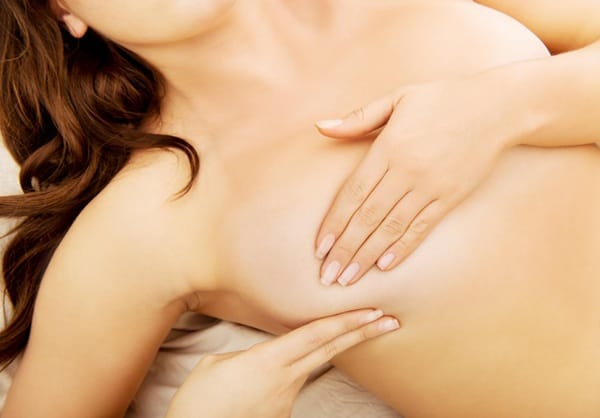
What Not to Do When Massaging Your Breasts
While learning how to breast massage can be incredibly beneficial, it’s just as important to understand what to avoid. These common mistakes can reduce the effectiveness of the massage—or worse, cause discomfort or harm.
- ❌ Don’t use too much pressure: Breast tissue is delicate. Deep or aggressive pressure can bruise sensitive areas or worsen tenderness, especially during PMS or breastfeeding.
- ❌ Don’t massage if you have an infection or open wound: Avoid massaging over any rashes, infections, cysts, or unhealed incisions. Always wait until your skin has fully healed.
- ❌ Don’t skip hygiene: Always wash your hands before touching your breasts. If you’re using oils, make sure they’re clean, natural, and skin-safe.
- ❌ Don’t ignore pain: If you feel sharp, stabbing, or persistent pain while massaging, stop immediately. Massage should never be painful.
- ❌ Don’t expect miracles: While breast massage can offer great health and relaxation benefits, it won’t permanently increase size or replace medical treatments.
- ❌ Don’t massage too often: More isn’t always better. Over-massaging can lead to sensitivity or irritation. 2–3 times per week is usually enough for most people.
Knowing what not to do is just as important as learning the right techniques—especially when you’re exploring how to breast massage safely and mindfully.
🩺 When to See a Doctor
While learning how to breast massage is a great way to tune into your body, it’s important to recognize when professional medical care is needed. If you notice any of the following symptoms, schedule a check-up with your healthcare provider:
- Unexplained lumps or changes in breast shape or texture
- Persistent pain that doesn’t go away with gentle massage or rest
- Redness, swelling, or warmth that could indicate infection
- Discharge from the nipple not related to breastfeeding
- Skin dimpling, puckering, or rash on the breast or nipple area
- Recent surgery or implants—always check with your surgeon before starting massage
Trust your intuition. If something feels “off,” it’s better to get it checked out. Breast massage should feel supportive and soothing, not worrisome or painful.
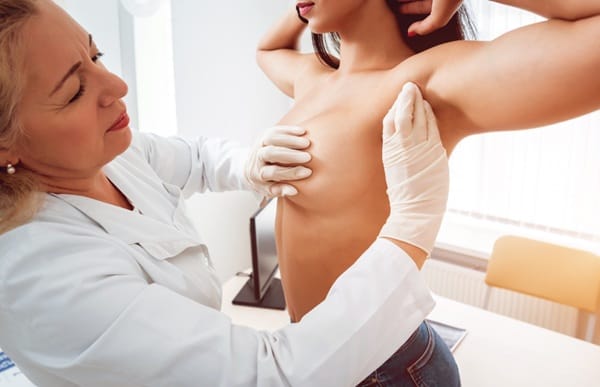
Frequently Asked Questions
❓ How to breast massage properly at home?
Start with clean hands and a natural oil. Use gentle, circular motions around the breast, then sweep inward toward the chest. Include the underarm and collarbone area for lymphatic support. Go slow, stay relaxed, and avoid applying too much pressure. Jump to our step-by-step guide.
❓ Can breast massage increase size?
There is no scientific evidence that breast massage increases breast size permanently. Some people report a temporary fuller look due to improved blood flow or posture, but massage won’t lead to actual tissue growth.
❓ How often should I do breast massage?
2–3 times a week is a good place to start. You can do it more often if you’re managing soreness or swelling, especially around your period or while breastfeeding. Just be gentle and let your body guide you.
❓ Is it normal to feel emotional during breast massage?
Yes—completely normal. The chest is a sensitive, emotional area tied to body image, hormones, and even trauma. Breast massage can trigger emotional release, especially if you’re reconnecting with your body in a new way.
❓ Can I do breast massage if I have implants?
Yes, but only after your surgeon gives you the green light. In fact, gentle massage is often recommended to help prevent capsular contracture and support healing after implant surgery.
❓ Can I breast massage while breastfeeding?
Absolutely. Breast massage can help with milk flow, relieve engorgement, and prevent blocked ducts. Use warm compresses before massaging, and always be extra gentle during this time.
❓ What type of oil should I use?
Go for natural, non-toxic oils like coconut, almond, jojoba, or olive oil. You can add a drop of essential oil like lavender if you’d like, but always test for skin sensitivity first.
🔥 Try This Next: Hot Oil Massage at Home
Discover how a warm oil massage can calm your nervous system, relax tight muscles, and elevate your self-care routine—all from the comfort of home. 👉 Read: Hot Oil Massage – How to Do It at Home
❓ How often should I massage my breasts?
For most people, massaging your breasts 2–3 times a week is enough to support lymphatic flow, relieve tension, and promote circulation. If you’re experiencing specific issues like PMS tenderness, engorgement, or recovering from surgery, you may benefit from more frequent sessions—but always listen to your body. Gentle, regular practice is more effective than intense, infrequent massage.
❓ Are there any techniques I should use to ensure I’m massaging my breasts properly?
Absolutely. If you’re learning how to breast massage for the first time, a few foundational techniques can make the experience more effective and enjoyable. Begin with slow, circular motions—start at the outer edges and gently move inward. This promotes healthy blood flow and helps you stay present in your body.
Sweep inward with soft, flat strokes to support lymphatic drainage, especially toward your chest and underarm areas. Use warm oil to help your hands glide comfortably, and always keep your shoulders relaxed to avoid unnecessary tension.
Above all, listen to your body. The massage should feel soothing and intentional, never rushed or painful. With consistent, mindful practice, you’ll develop a rhythm that works for you.
🔗Related Articles
👉 Breast Massage at Home: A Simple Self-Care Routine
👉 Lymphatic Drainage Massage
👉 Should You Massage Lymph Nodes When Sick?
📌Final Thoughts
Breast massage is more than just a wellness trend—it’s a deeply personal way to care for your body, reduce discomfort, and stay in tune with your health. Whether you’re exploring how to breast massage for hormonal support, lymphatic drainage, or simple relaxation, the benefits can be both physical and emotional.
As long as you use gentle techniques, listen to your body, and practice consistently, breast massage can become a grounding ritual in your self-care routine. It’s not about perfection—it’s about presence.
📚 References
- Khorram O, Taheri M, Taheri S. Breast Massage: Its Role in Health Promotion, Breast Cancer Prevention, and Treatment of Breast Cancer. Int J Prev Med. 2016;7:43.
- Gelb J, Lai G. Breast Massage: A Critical Analysis of the Literature. J Bodyw Mov Ther. 2016 Oct;20(4):756-767.
- Wikipedia. Breast Massage. Retrieved from: https://en.wikipedia.org/wiki/Breast_massage
⚠️ Disclaimer:
This article is for informational purposes only and does not constitute medical advice. Always consult with a licensed healthcare provider or certified massage therapist before beginning any new treatment, especially if you have pre-existing health conditions or concerns.
